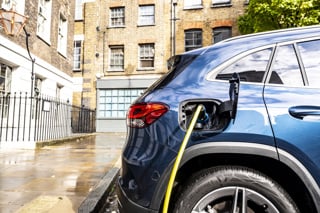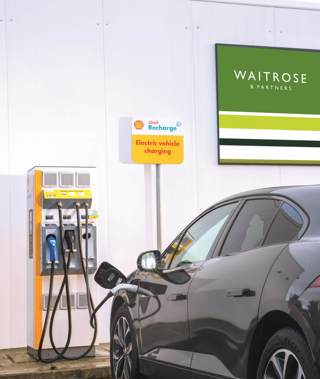The number of public available charge point increased by 1,584 from April to June, up 7% on the previous quarter.
The new figures, published by the Department for Transport (DfT) and supplied by Zap-Map, show there were 24,374 charge points at the beginning of July.
Rapid charging devices, meanwhile, increased by 292 from Q1 to Q2, an increase of almost 7% on the previous quarter, with 4,551 were rapid chargers now available.
Since 2015, the number of public devices has grown by 44% per year, on average.
Rapid devices have increased at a much higher rate, with an average annual increase of 62%.
The DfT says that the coronavirus may have slowed device growth, with the annual growth in total and rapid devices since April 2020 being noticeably lower than average, at 36% and 46% respectively
Regional distribution of charging devices
There is an uneven geographical distribution of charging devices within the UK, according to the DfT data.
Some UK local authorities have bid for UK Government funding for charging devices, and others have not.
Most of the provision of this infrastructure has been market-led, with individual charging networks and other businesses, such as hotels, choosing where to install devices.
London and Scotland had the highest level of charging provision per 100,000 of population, with 83 and 47 devices per 100,000 respectively.
In comparison, the average provision in the UK was 36 per 100,000.
Northern Ireland had the lowest level of charging device provision with 17 devices per 100,000, followed by Yorkshire and the Humber and the North West with 21 and 22 devices per 100,000.
Scotland had the highest rate of rapid device provision of 12 rapid devices per 100,000, while the average provision in the UK was 6.8 per 100,000.
Rapid device provision was lowest for Northern Ireland and Wales, with 1.1 and 4.4 rapid devices per 100,000 respectively.
The details can be found on a DfT interactive map of charge points according to local authority.
All regions in the UK saw an increase in total and rapid charging devices between April and July 2021.
The number of available devices can fluctuate for a range of reasons, says the DfT.
Increases likely reflect installation of new devices, while owners and operators can choose to temporarily or permanently decommission or replace devices, or they can be unavailable due to faults, maintenance or other restrictions in the area where they are located.
The West Midlands has seen the greatest total increase in devices, increasing 20.6% from last quarter, corresponding to an additional 272 devices.
This regional growth is boosted by an increase in device numbers in Coventry, where the total number has increased by 160.
In contrast, the smallest quarterly growth in devices has been in Northern Ireland, with numbers increasing by only 0.9%. This is followed by Yorkshire and the Humber, which has seen a total growth of 2.6%.
The number of available rapid devices has increased most noticeably in Wales, which has grown by 23.7%.
However, Wales still has the lowest level of rapid device provision in Great Britain, with 4.4 devices per 100,000 population.
The South East has seen the lowest quarterly growth in rapid devices at 1.1%, followed by Yorkshire and the Humber at 2.7%.
Northern Ireland had the smallest increase in the number of rapid devices in the UK, with only one additional rapid device over the past quarter.
> Interested in comparing electric vehicle data? Check out our EV tool.
























Login to comment
Comments
No comments have been made yet.